Food Chain
A food chain is a series of organisms that are dependent on each other for food. It represents the flow of energy and nutrients from one organism to another within an ecosystem. Each organism in a food chain occupies a specific trophic level, which refers to its position in the chain based on what it eats.
Components of a Food Chain
A typical food chain consists of the following components:
- Producers: These are organisms, such as plants, that produce their own food through photosynthesis.
- Primary Consumers: These are herbivores that feed on producers.
- Secondary Consumers: These are carnivores that feed on primary consumers.
- Tertiary Consumers: These are carnivores that feed on secondary consumers.
- Decomposers: These organisms, such as bacteria and fungi, break down the remains of dead plants and animals, returning nutrients to the soil.
Example of a Food Chain
Here's an example of a simple food chain in a grassland ecosystem:
Grass (Producer) → Grasshopper (Primary Consumer) → Frog (Secondary Consumer) → Snake (Tertiary Consumer) → Hawk (Tertiary Consumer)
Study Guide
Here are some key points to remember about food chains:
- Explain the concept of a food chain and its importance in an ecosystem.
- Identify the different trophic levels in a food chain and the organisms that belong to each level.
- Understand the role of producers, consumers, and decomposers in a food chain.
- Describe the flow of energy and nutrients in a food chain.
- Give examples of food chains in different ecosystems.
Understanding food chains is essential for understanding the dynamics of ecosystems and the interdependence of organisms within them.
[Food Chain] Related Worksheets and Study Guides:
.◂Science Worksheets and Study Guides First Grade. The Sky
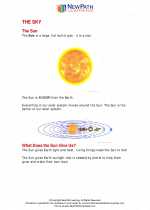
 Activity Lesson
Activity Lesson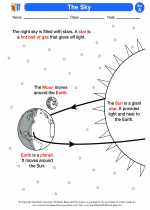
 Worksheet/Answer key
Worksheet/Answer key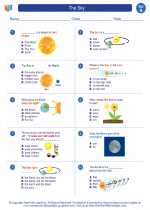
 Worksheet/Answer key
Worksheet/Answer key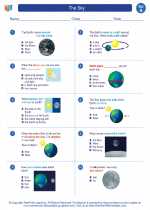
 Worksheet/Answer key
Worksheet/Answer key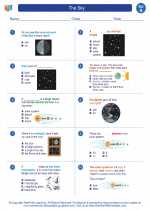
 Worksheet/Answer key
Worksheet/Answer key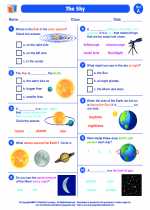
 Vocabulary/Answer key
Vocabulary/Answer key
